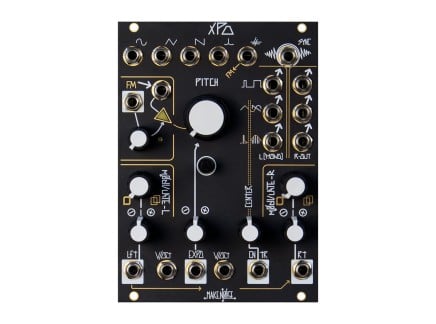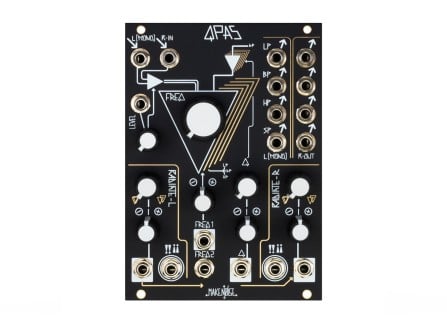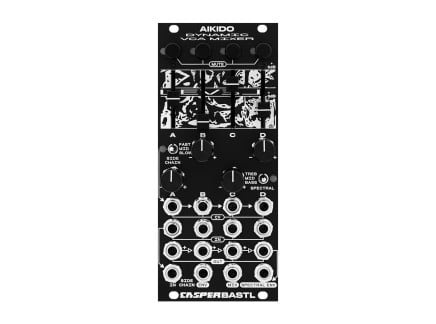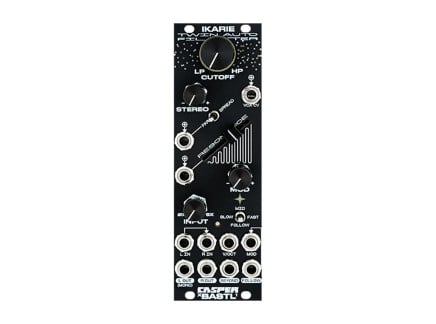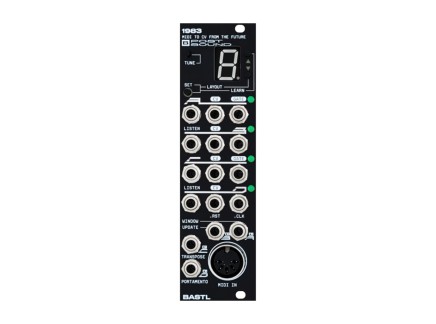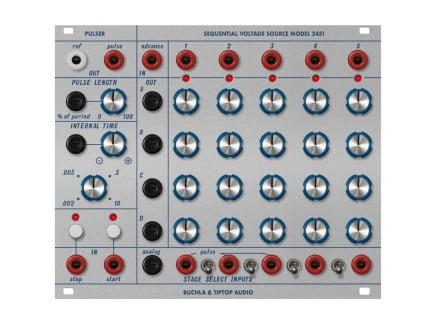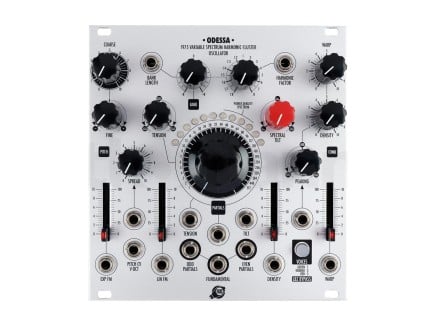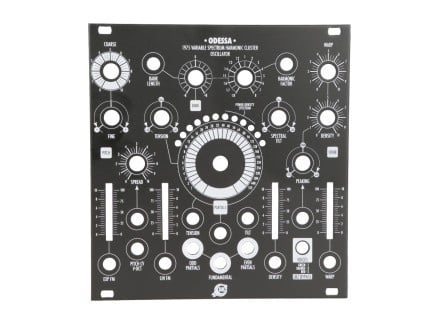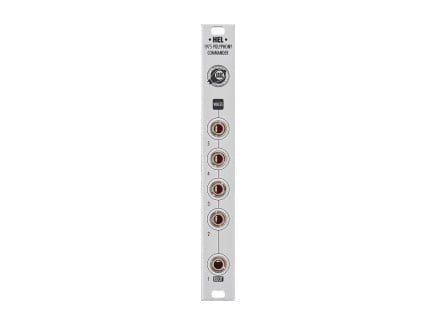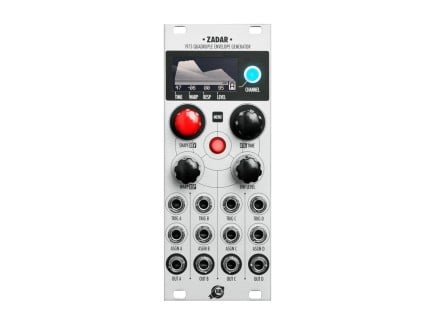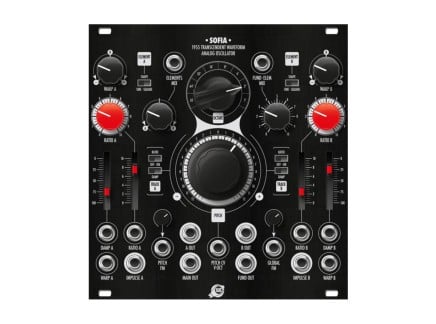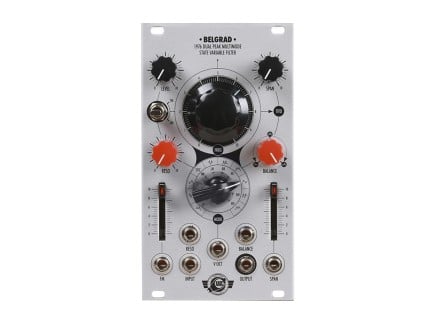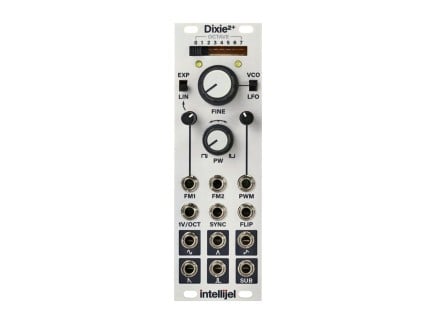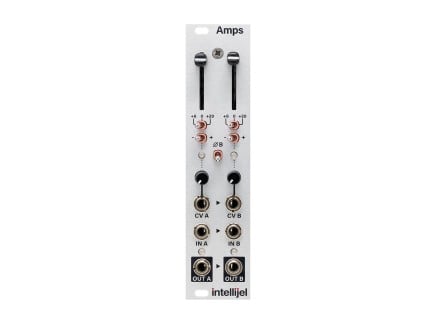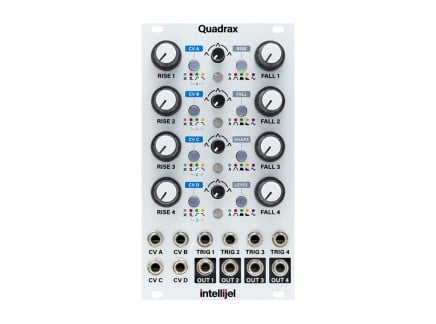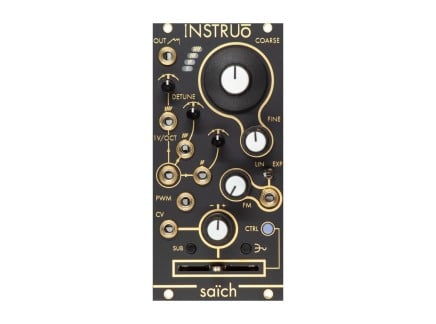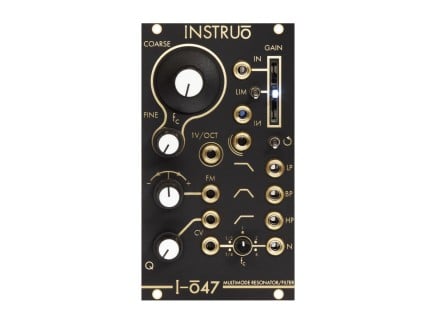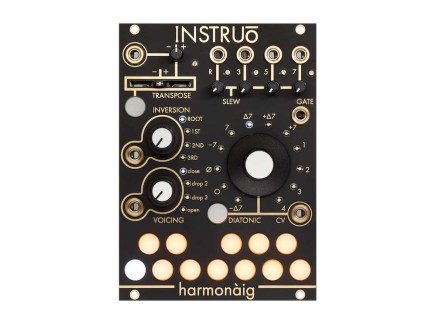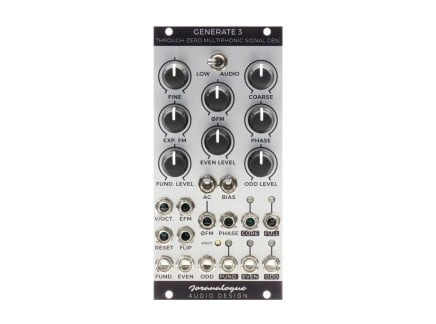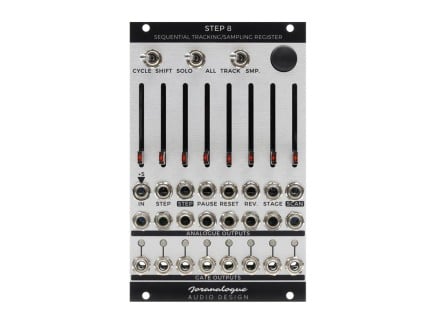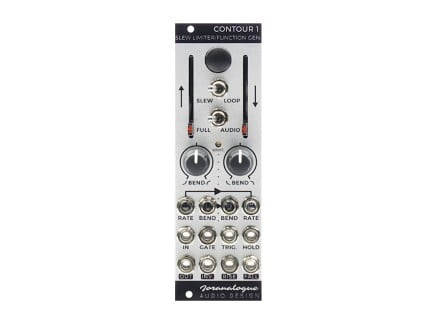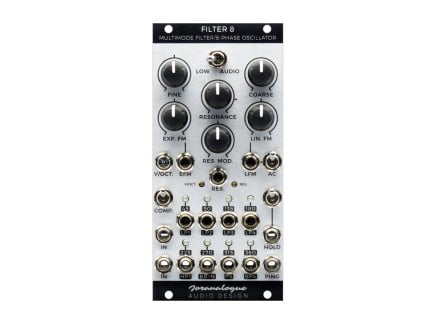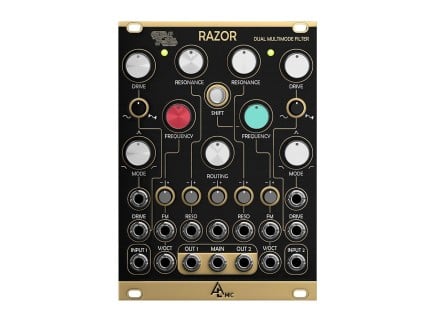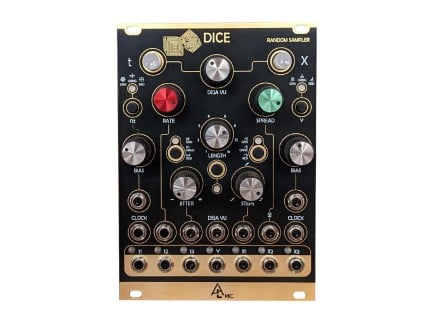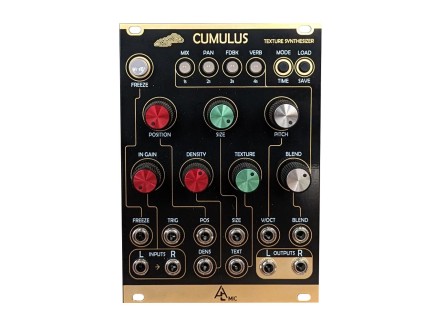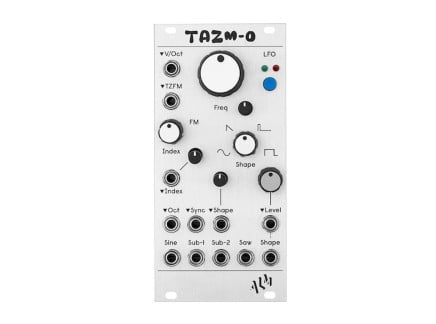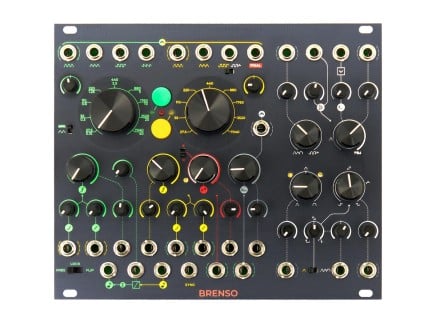Oscillators sit at the heart of any modular rack. They are, almost always, the first in the chain of sound synthesis, unless you are using samplers as a sound source. They are one of the most important factors for defining your sound.
And what gives oscillators their sound? The kind of waveforms they can produce. And that is determined by the circuitry of the oscillator and the available controls for shaping the harmonics of the basic waveforms. The reason why a Moog’s saw wave sounds different from an Arturia saw wave is the underlying circuitry. The reason why a Tiptop Buchla 258t sounds different from a Bastl Pizza are the internal electronics, the available controls, and how they interact with each other.
Fortunately, we have come a long way from the earliest days of modular synthesis, where you were limited to basic waveforms and straightforward synthesis techniques. Today, there are oscillators that combine East Coast and West Coast principles and are capable of producing complex waveshapes. That isn’t to say, though, that straightforward oscillators don’t have their uses. Today, you simply have a lot more options to choose from.
In this guide, we have picked some of our favorite oscillators in the world of Eurorack modular synthesizers. Most of the oscillators in this guide are capable of producing complex, dynamic, and evolving tones. If you are looking to add more complexity to your sound palette, dive in and see what fits your vision, your rack space, and your budget.
Make Noise XPO: Stereo Prismatic Oscillator
Trust Make Noise to push the boundaries while making experimental more accessible. The brand takes a lot of its inspiration from West Coast-style synthesis, something which is evident in Maths, 0-CTRL, and its other popular modules. The inspiration is immediately noticeable in the all-analog XPO as well, a monophonic stereo oscillator that can do a lot. The analog oscillator has a total of 11 outputs—yes, you read that right—which includes five mono outputs and three pairs of stereo outputs. In mono outputs, you have your standard waveforms—sine, triangle, and saw—plus a spike waveform and a sub output, as well.
The stereo outputs are where Make Noise XPO really stands out. There is a pulse-width modulated square output, a variable waveshaping output that blends smoothly between a sine and a saw wave, and a wavefolding output in the stereo section. And there are separate CV inputs with individual attenuators for the left and right channels of the stereo section. You can choose to supply different control voltages to the left and right channels, or control both the channels of the stereo with just one CV source.
Speaking of CV capabilities, XPO goes all out in that department, too. There are two v/octave inputs. You can use them simultaneously for some gnarly FM, or use them separately for melody stacking and transposition. There is depth control for linear FM, which, by default, is normalled to the sub oscillator's output. Simply start turning the associated attenuator to get those harmonics-laden FM tones. There is also exponential FM via the pitch CV input, which works great with the usual CV sources—LFOs, sequencers, and envelopes, etc.
In terms of its sonic capabilities, Make Noise XPO can deliver a wide range. From harmonically rich and evolving drones to percussive textures, and a heavily modulated stereo field, there is a lot you can do with this oscillator. And with so many CV inputs and audio outputs to play with, there are a lot of patching possibilities. Imagine taking just four of the waveform outputs and passing them through different signal paths such as VCAs and filters. Utilizing the two v/oct inputs to run two different melodic sequences at the same time. And self-patching the oscillator by using some of the waveform outputs as inputs for FM or the module's waveshaping parameters. Make Noise XPO is a sonic playground where you can lose yourself for hours.
Key Features:
- 11 outputs
- Linear and exponential FM
- Two v/oct inputs
- Multiple voltage-controllable stereo outputs
- Immense self-patching possibilities
- Great for: Evolving drones, FM-style tones and textures, experimental stereo patching
Bastl Pizza: Digital Complex Oscillator
Speaking of unusual oscillators, there is Bastl Pizza. It is a digital oscillator in a mere 8hp, with a sound based on FM synthesis and waveshaping. It also has a built-in VCA and a two-stage envelope, accessible via the CTRL button. In that sense, Pizza can also be considered a full voice in itself. You don’t necessarily need a VCA or an envelope generator to control the dynamics of the sound.
Pizza contains three separate oscillators—a main oscillator, an octave oscillator, and a ratio oscillator. Likewise, there are three separate outputs: a main output, an output for the octave oscillator, which can be a sine wave, a saw wave, and a square wave, and a separate pulse output, which you can assign to the ratio oscillator.
There is an FM Index control with a slider for controlling the phase modulation of the main oscillator. The slider lets you choose the source of the phase modulation: to the right, it is the octave oscillator, and to the left, it is the ratio oscillator. You can choose between different ratios for the ratio oscillator. And the octave oscillator can go up to two octaves.
There is also a shape control for shaping the waveforms of the modulating oscillators. Here, too, you have options. Standard waveshaping goes between sine, square, and saw. There is also wavefolding, which is inspired by Buchla’s 259 wavefolding circuit, and there is ring modulation. Now, you would think that’s a lot already. But this is only the starting point of Bastl Pizza.
The real star of the show, which opens up a world of sonic possibilities, is the CTRL knob. The CTRL knob can be assigned to ring modulation, linear FM, detune, wavefolding, VCA, and a bunch of other things. Imagine assigning CTRL to ring modulation. With the shape section set to wavefolding, you can then have wavefolding, FM modulation, and ring modulation of the main oscillator, all happening at the same time! Talk about creating harmonically rich waveforms. And all of it—FM index, CTRL, and Shape—are voltage-controllable, with the first two featuring dedicated attenuators.
Key Features:
- Three outputs
- Can simultaneously do FM synthesis, wavefolding, and ring modulation
- A pitch control knob that also functions as an octave switcher
- CV inputs for FM depth, CTRL knob, and shape
- Great for: Harmonically rich waveforms, gnarly tones, dystopian drones
Tiptop Audio Buchla 258t: Classic Analog Reborn
In late 2021, the Eurorack synth world woke up to a long cherished dream—Buchla modules in Eurorack format. Tiptop Audio teamed up with Buchla USA to adapt some of Don Buchla’s iconic 200 series modules for use in Eurorack modular synthesizers. The 258t is a modern adaptation of the original Buchla oscillator from the 200 series.
An analog oscillator, it has two independent oscillators, each with its own FM input, a DC-coupled pitch CV input (with dedicated attenuverter!), 1V/oct input, and wave shape controls. The first oscillator can morph smoothly from a sine to a saw. The second oscillator morphs between a sine and a square, so you have enough sonic territory to explore. The FM is linear, which means it is best suited to classic FM techniques using audio rate oscillators as modulation sources. Of course, the best part about 258t is the classic Buchla sound—those fat FM tones and raw oscillator sounds that immediately pull you in.
Since you have two independent oscillators to play with, you can do melody stacking with separate CV sequences, or explore self-patching techniques for FM synthesis.
Key Features:
- Two independent oscillators
- Processing input for scaling pitch
- Linear FM with CV controls for making dynamic timbres
- Voltage-controllable waveshape for each oscillator
- Great for: Classic Buchla FM sounds, chaotic cross-modulation, and thick, raw, vintage analog oscillator tones
Xaoc Devices Odessa: Additive Synthesis Powerhouse
An analog oscillator that gives you a lot of control over the harmonics, Xaoc Devices Odessa brings additive synthesis to the Eurorack world. The device has a core oscillator, which can be a sine or a square (you can select between the two with a jumper at the back). You can add more harmonics to the waveform by dialing in up to 512 sinusoidal partials with the big knob in the center. The center LED panel gives you visual feedback on the number of sine partials you are adding to the fundamental frequency and their approximate amplitude. And you can control the partials you are adding by way of spectral tilt, tension, and spread.
Tension controls the spread of the added harmonics in relation to the fundamental. In the center position, the partial frequencies are multiples of the fundamental frequency. As you move the knob to the right, the partials are spread further apart from the fundamental, creating metallic tones. To the left, it creates a detuned effect. The tilt function determines how fast the partial frequencies decay in amplitude. To the right, the partial frequencies become louder than the fundamental frequency, creating bright tones. To the left, you get warmer tones. In that sense, tilt can also be seen as similar in effect to a low-pass filter.
What’s more, Odessa can work as a 1-voice, 3-voice, or a 5-voice oscillator with the push of a button. In 3- or 5-voice mode, the spread knob controls the detuning of the added voices. There is Bank for controlling the weightage between odd and even harmonics, exponential and linear FM, and CV controls for all the functions.
You can even create phasey, flangey tones on Odessa with Density and Warp, which create a comb filtering effect.
Key Features:
- Additive oscillator with a fundamental tone and upto 512 sinusoidal partials
- Three outputs—fundamental, odd, and even harmonics
- Fundamental oscillator can be switched between sine and square
- Nine controls for shaping the partials
- Built-in comb filtering effects
- Great for: Metallic textures, dense sound-masses, detuned unison tones, phasey and flangey tones
Xaoc Devices Sofia: Experimental Analog
Sofia by Xaoc Devices is a unique oscillator by way of its synthesis model. The oscillator has a base tone and two "ripple elements", which are time-based spectral elements. Ripple elements are retriggered at the beginning of each cycle of the fundamental tone. Think of ripple elements as short waveshapes being added to the fundamental waveform. And there are seven controls for shaping the waveform of the ripple elements. With the Shape control, you can select between a sine and a square for the ripple elements. The Damp control determines the decay rate of the ripple elements. With a very short decay, you get resonant tones with a short spike at the beginning of the sound. With longer decay times, you get warmer tones since the ripple waveform barely decays in amplitude with each cycle.
Ratio controls the number of cycles of the ripple waveform. Higher ratios mean the formant waveforms are further apart from the base tone, leading to metallic textures. You can control the relative balance between the two ripple elements as well as the balance between the ripple tones and the fundamental tone.
All of these functions have their dedicated CV control with attenuators, which means you can bring out all your envelopes and CV sources to create dynamic tones and textures. Speaking of textures, Sofia has a wide range. You can create warm sine tones, woody ping-pongs, aggressive hard sync tones, vowel-like sounds, and bright, sparkly sounds.
Key Features:
- 4 individual outputs, including fundamental tone, the final mix, and two ripple outputs
- Seven controls for shaping the amplitude, cycle, and decay rate of the additive (ripple) waveforms
- Global FM and pitch FM, in addition to the standard v/oct input
- Octave switcher that can go up to 8 octaves
- A wide range of self-patching possibilities
- Great for: Fuzzy tones, sparkly textures, experimental animal-like sounds, aggressive, metallic tones
Intellijel Dixie 2+: The Classic Analog Workhorse
The successor to the Dixie 2, Intellijel’s Dixie 2+ is a simple looking oscillator with a broad range of sonic possibilities. You get six waveform outputs, including a sub out for your low end. There are two FM inputs for creating dense sounds. One of the FM inputs can be switched between exponential and linear for varied results.
With hard sync, you can quickly get dense, buzzing tones out of it. There is pulse width modulation with a dedicated attenuator, a flip sync option for additional modulation possibilities, and an octave switcher that goes up to eight octaves. And you can use the oscillator as a handy LFO, too, with a nifty switch.
All the controls are laid out neatly in an 8HP panel. Getting your head around the Dixie 2+ is pretty easy, given the straightforward interface. But don’t let the simplicity of the device fool you into thinking that it isn’t capable of much. If you are looking for a primary oscillator for your system, a workhorse that you can go to on most days, the Dixie 2+ fits the bill perfectly.
Key Features:
- Six waveform outputs - sine, triangle, saw, sharktooth, square, and sub
- Works as a VCO and an LFO
- Two FM inputs
- Linear and exponential FM
- Octave switcher that can go up to 8 octaves
- Pulse-width modulation
- Hard sync and flip sync circuit
- Great for: Classic, no-nonsense, great-sounding analog oscillator tones, with FM, PWM, Sync, and more
Instruo Saïch: Supersaws and Polyphony
Craving polyphony? Saïch has got you covered. Instruo's Saïch is a quad oscillator with four 1V/octave inputs for creating chords. Even if you don’t have a quad CV generator, you can still use a single v/oct input and use its diatonic modes for paraphonic patching.
At its core, Saïch is a supersaw oscillator. There are four saw waveforms which can be detuned individually or globally. You get a common output for all the four waveforms. The first saw wave can be switched to a sub, which can be a saw, a square, or a pulse-width modulated waveform. The key feature of Saïch is the smart "mix profiles". You can choose between seven different mix profiles, which determine the relation between the four saw waves.
A slider controls how the four waveforms come up or down in volume, depending on the chosen mix profile. For example, all four waveforms can gradually increase in amplitude as the slider is pushed to the right. Similarly, the waveforms can increase in amplitude in pairs, allowing you to create dynamic paraphonic stabs. There is also an intervallic offset mode which offsets the incoming pitch by octaves, thirds, or fifths. Of course, you can modulate the slider with CV and a dedicated atteneuverter.
Key Features:
- Supersaw oscillator with four saw waves
- One common output
- Smart mix profile for shaping the amplitude of the four waves
- Four v/oct inputs
- Diatonic mode for creating chords from a single v/oct input
- Great for: Classic supersaw sounds made popular by '90s trance, warm Deadmau5-style stabby chords, easy polyphony in the modular world
Joranalogue Generate 3: Thru Zero and Back
Joranalogue Generate 3 is an FM-based oscillator with a twist. It uses through-zero frequency modulation, which means that the incoming modulating voltage can push the oscillator into negative frequency territory. This allows for some unexpected, FM tones unlike other FM-style devices. There is through-zero phase modulation, too, adding to the harmonic richness of the resultant sound.
At the core of Generate 3 is a simple triangle wave that can be enriched with frequency modulation, phase modulation, as well as ring modulation. The amplitudes of the even and odd harmonics can be adjusted manually. Or, you can apply an external signal to the amplitude for more dynamic tones. Supply audio-rate signals to the amplitudes of odd and even timbres for aggressive tones.
Generate 3 has five individual outputs—the fundamental tone, even and odd timbres, the core triangle oscillator, and the full mix. Send each of the five outputs through differing signal paths to reach sonic territories. The multiple outputs also make the oscillator ideal for self-patching techniques.
Joranalogue Generate 3 can create vowel-type sounds and complex timbres. It can also be used as an LFO, which adds to its versatility.
Key Features:
- Five individual outputs
- Through-zero FM and phase modulation
- Ring modulation capabilities
- Switch between VCO and LFO ranges
- Great for: Creating vowel-type tones, bright textures, and complex waveforms that sit between the classic saw, sine, and square
After Later Audio Pixie: Mutable Plaits Reborn
Mutable Instruments might have stopped production, but you can still get your hands on the iconic Plaits, the successor to the ever-popular Braids oscillator. After Later’s Audio Pixie is an exact clone of Mutable Instruments Plaits. Much like Braids, Plaits has several synthesis modes and waveforms that you can access via the buttons. Unlike Braids, however, there is no menu diving. Instead, everything is laid down upfront, and different combinations of the buttons let you access the different synthesis models. If you are familiar with Mutable Instruments Rings, Plaits has a very similar interface.
Depending on the chosen synthesis mode, the knobs perform different functions, from acting as a low-pass filter to shaping the timbre with FM-style synthesis etc.
You can also load a 2018 firmware update to get access to DX7 sounds in Plaits. In terms of sonic capabilities, even without the firmware update, Plaits has a wide range. You can gte classic subtractive tones for leads and bass; bells and resonant sounds similar to that of Rings; phase-distorted textures; string-like sounds with a slow attack, and more.
If you are looking for a versatile oscillator and you are ok with a DSP-based option, this Plaits clone is a no-brainer.
Key Features:
- Digital oscillator
- Firmware options for a wider palette of sounds, including Yamaha DX7 tones
- Hands-on access to various synthesis modes
- Very performable with the help of dedicated knobs to shape the sound on the fly
- Built-in LPG, so you don’t need a separate VCA
- Great for: Adding versatility to your rack, given the wide range of sonic possibilities
The Takeaway
This only touches the tip of the iceberg. There are other equally good and equally versatile oscillators in the Eurorack world, such as Make Noise STO, 4MS Ensemble Oscillator, ALM Busy Circuits MCO, and Verbos Electronics Harmonic Oscillator. It comes down to the kind of sound you are after, the amount of control you want over sound shaping, your appetite for surprises, price point, and the space in your rack. For example, if you are after more consistent, expected results, go for a workhorse like the Dixie 2+ by Intellijel. For more creative sound synthesis and the element of surprise and discovery, Make Noise XPO is a good fit.
Strike a balance between all the different factors and you will find the perfect fit for your rack. And if you can’t make up your mind, pick one from this list. Some of the most trusted modular synth artists use a lot of these oscillators. You can’t go wrong with them.


